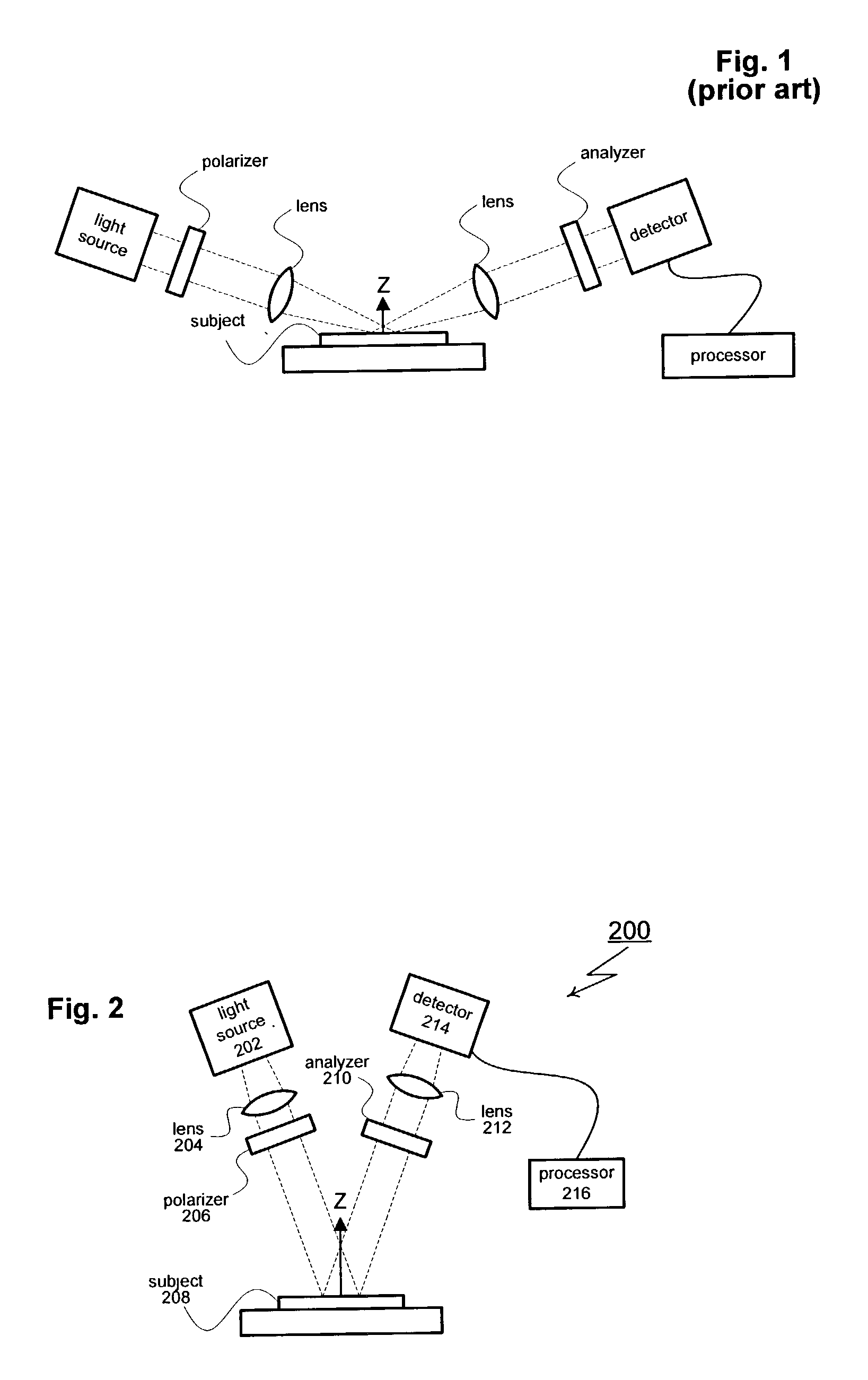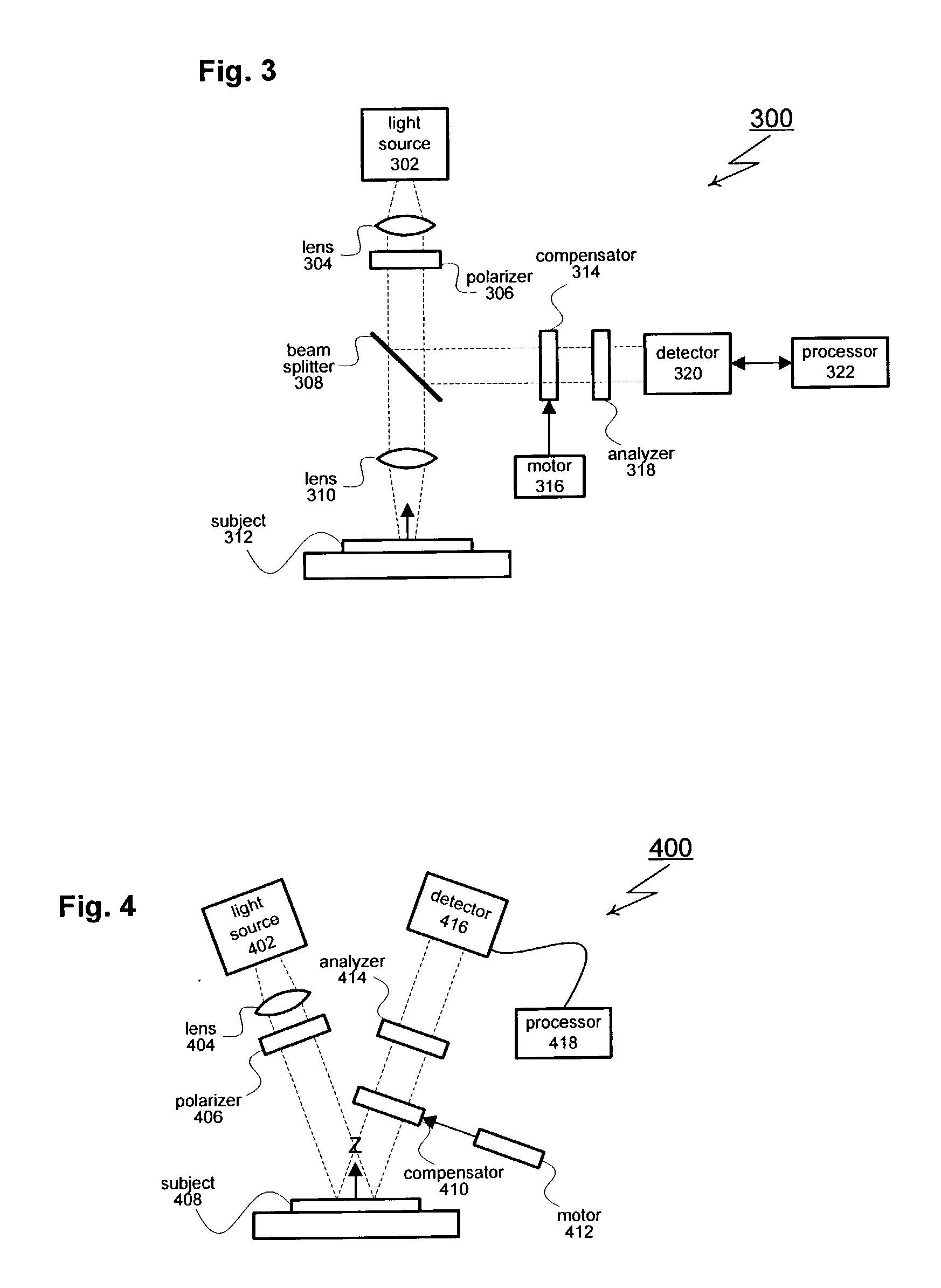Scatterometry to simultaneously measure critical dimensions and film properties
- Summary
- Abstract
- Description
- Claims
- Application Information
AI Technical Summary
Benefits of technology
Problems solved by technology
Method used
Image
Examples
Embodiment Construction
As shown in FIG. 2, a first aspect of the present invention includes an ellipsometer generally designated 200. Ellipsometer 200 includes an illumination source 202 that creates a mono or polychromatic probe beam. The probe beam is focused by one or more lenses 204 (or other appropriate optical elements such as mirrors) and passed through a polarizer 206. The polarizer 206 imparts a known polarization state to the probe beam. The polarized probe beam creates an illumination spot on the surface of the subject under test 208. An image of the illumination spot (or a portion of the illumination spot) passes through an analyzer 210 and lens 212 before reaching a detector 214. Lens 212 may be selected from a range of different components including achromatic lenses and focusing mirrors. The detector 214 captures (or otherwise processes) the received image. A processor 216 analyzes the data collected by the detector 214.
For the specific example of FIG. 2, the probe beam is directed at an...
PUM
 Login to View More
Login to View More Abstract
Description
Claims
Application Information
 Login to View More
Login to View More - R&D
- Intellectual Property
- Life Sciences
- Materials
- Tech Scout
- Unparalleled Data Quality
- Higher Quality Content
- 60% Fewer Hallucinations
Browse by: Latest US Patents, China's latest patents, Technical Efficacy Thesaurus, Application Domain, Technology Topic, Popular Technical Reports.
© 2025 PatSnap. All rights reserved.Legal|Privacy policy|Modern Slavery Act Transparency Statement|Sitemap|About US| Contact US: help@patsnap.com



